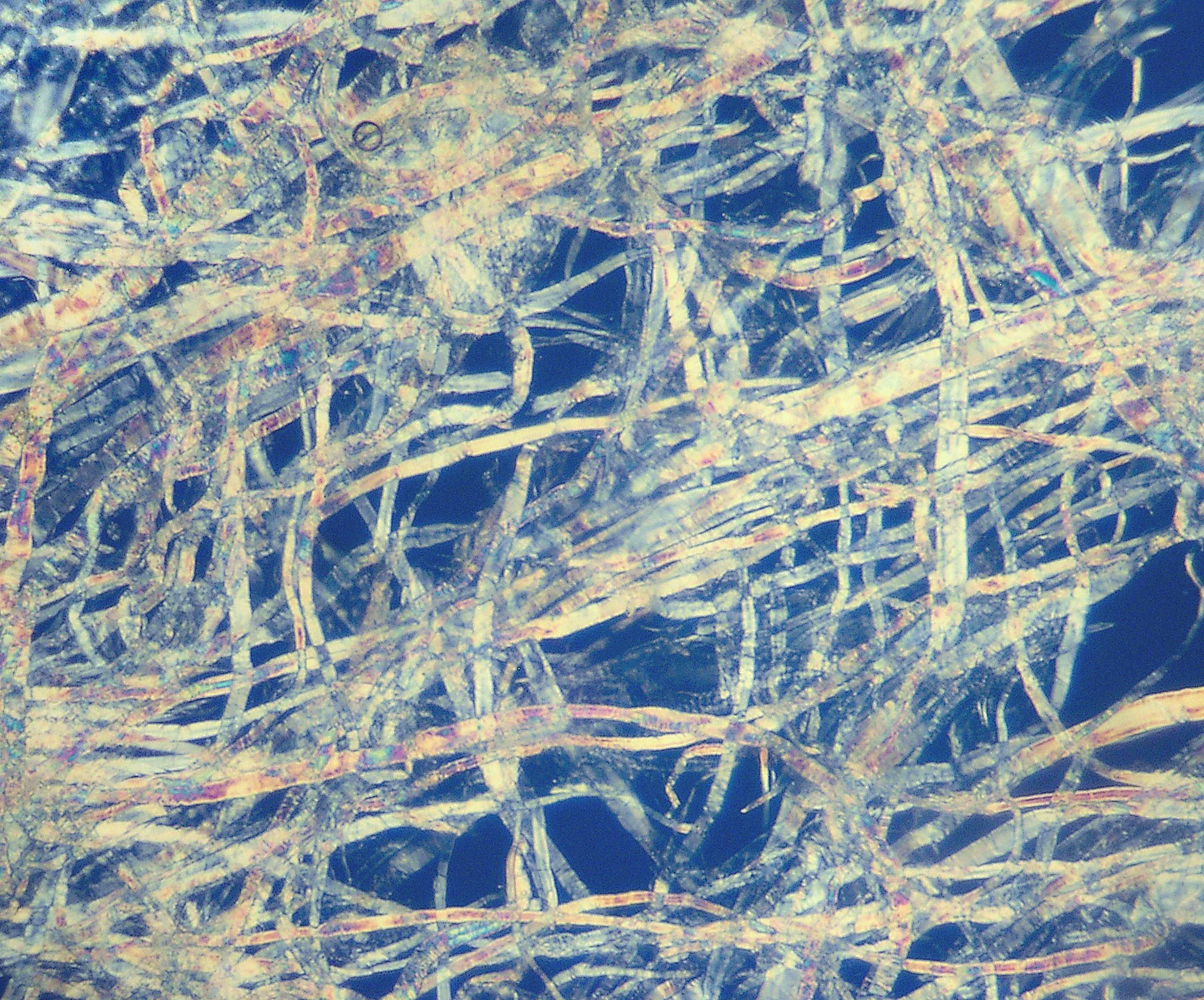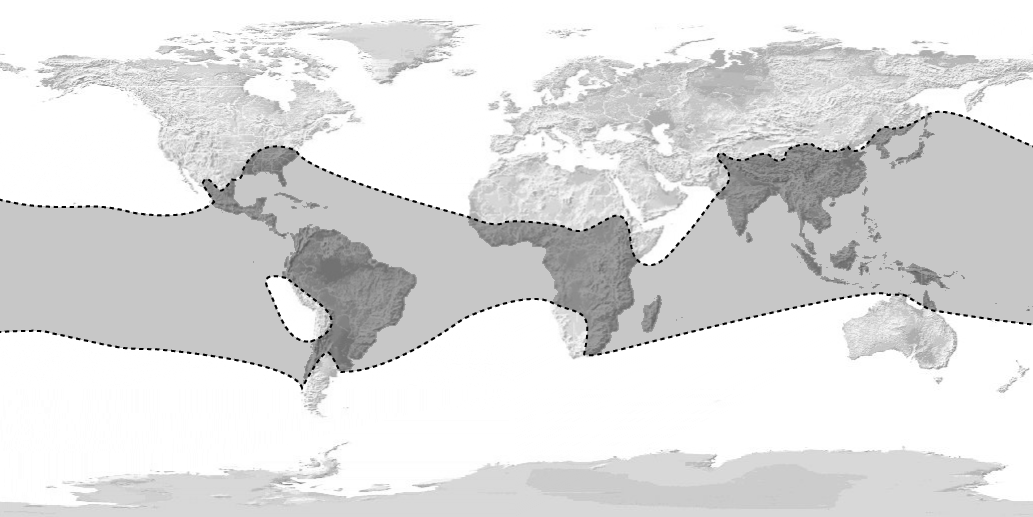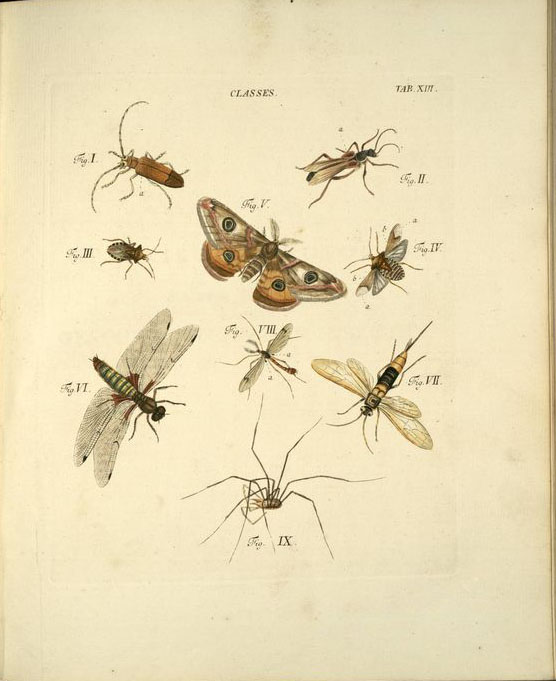|
Pulp (paper)
Pulp is a fibrous Lignocellulosic biomass, lignocellulosic material prepared by chemically, semi-chemically, or mechanically isolating the cellulose fiber, cellulosic fibers of wood, fiber crops, Paper recycling, waste paper, or cotton paper, rags. Mixed with water and other chemicals or plant-based additives, pulp is the major raw material used in papermaking and the industrial production of other Pulp and paper industry, paper products. History Before the widely acknowledged invention of papermaking by Cai Lun in China around AD 105, paper-like writing materials such as papyrus and amate were produced by ancient civilizations using plant materials which were largely unprocessed. Strips of Bark (botany), bark or Bast fibre, bast material were woven together, beaten into rough sheets, dried, and polished by hand. Pulp used in modern and traditional papermaking is distinguished by the process which produces a finer, more regular slurry of cellulose fibers which are pulled out of ... [...More Info...] [...Related Items...] OR: [Wikipedia] [Google] [Baidu] |
Bamboo
Bamboos are a diverse group of mostly evergreen perennial plant, perennial flowering plants making up the subfamily (biology), subfamily Bambusoideae of the grass family Poaceae. Giant bamboos are the largest members of the grass family, in the case of ''Dendrocalamus sinicus'' having individual stalks (Culm (botany), culms) reaching a length of , up to in thickness and a weight of up to . The internodes of bamboos can also be of great length. ''Kinabaluchloa, Kinabaluchloa wrayi'' has internodes up to in length. and ''Arthrostylidium schomburgkii'' has internodes up to in length, exceeded in length only by Cyperus papyrus, papyrus. By contrast, the stalks of the tiny bamboo Raddiella, ''Raddiella vanessiae'' of the savannas of French Guiana measure only in length by about in width. The origin of the word "bamboo" is uncertain, but it most likely comes from the Dutch language, Dutch or Portuguese language, Portuguese language, which originally borrowed it from Malay langua ... [...More Info...] [...Related Items...] OR: [Wikipedia] [Google] [Baidu] |
Matthias Koops
Matthias Koops (active 1789–1805) was a British paper-maker who invented the first practical processes for manufacturing paper from wood pulp, straw, or recycled waste paper, without the necessity of including expensive linen or cotton rags. Koops was born in Pomerania, the son of Matthias and Katherina Dorothea Koops. By 1789 he had immigrated to England, for he leased a house in Edmonton, London, that year. In 1790 married Elizabethe Jane Austen at St Marylebone Parish Church. He was naturalized on 1 April 1790. From 1800–1801, Koops operated the Neckinger Mill in Bermondsey, London, where he experimented with making paper from straw, hay, wood pulp, recycled paper, and other items, without the necessity of cloth. In 1801, Koops was granted two patents for these inventions, issued on 17 February and 18 May. These patents granted him the "sole privilege of making paper from straw, hay, thistles, waste and refuse of hemp and flax, and different kinds of wood and bark" for a ... [...More Info...] [...Related Items...] OR: [Wikipedia] [Google] [Baidu] |
Jacob Christian Schäffer
Jacob Christian Schäffer, alternatively Jakob, (31 May 1718 – 5 January 1790) was a German Dean (Christianity), dean, professor of theology, botanist, mycology, mycologist, entomology, entomologist, ornithology, ornithologist and inventor. He was a theologian and teacher at Regensburg, Ratisbon. His work in natural sciences includes writing comprehensive and illustrated volumes on plants, fungi, birds, and insects, proposing new classification systems, and maintaining a museum of Novelty item, curiosities. Schäffer also experimented with electricity, colours, and optics, manufactured prisms and lenses, and invented an early washing machine and other practical devices. In the paper industry, he conducted experiments and published findings on alternate sources for paper production. He made studies of minute organisms without access to advanced microscopes and wrote a book on ''Daphnia.'' Biography Schäffer was born in Querfurt, near Halle. A younger brother Johan Gottlieb tr ... [...More Info...] [...Related Items...] OR: [Wikipedia] [Google] [Baidu] |
Paper Machine
A paper machine (or paper-making machine) is an industrial machine which is used in the pulp and paper industry to create paper in large quantities at high speed. Modern paper-making machines are based on the principles of the Fourdrinier Machine, which uses a moving woven mesh to create a continuous paper web by filtering out the fibres held in a paper stock and producing a continuously moving wet mat of fibre. This is dried in the machine to produce a strong paper web. The basic process is an industrialised version of the historical process of hand paper-making, which could not satisfy the demands of developing modern society for large quantities of a printing and writing substrate. The first modern paper machine was invented by Louis-Nicolas Robert in France in 1799, and an improved version patented in Britain by Henry and Sealy Fourdrinier in 1806. The same process is used to produce paperboard on a paperboard machine. Process sections Paper machines usually have at lea ... [...More Info...] [...Related Items...] OR: [Wikipedia] [Google] [Baidu] |
Woodcut
Woodcut is a relief printing technique in printmaking. An artist carves an image into the surface of a block of wood—typically with gouges—leaving the printing parts level with the surface while removing the non-printing parts. Areas that the artist cuts away carry no ink, while characters or images at surface level carry the ink to produce the print. The block is cut along the wood grain (unlike wood engraving, where the block is cut in the end-grain). The surface is covered with ink by rolling over the surface with an ink-covered roller ( brayer), leaving ink upon the flat surface but not in the non-printing areas. Multiple colours can be printed by keying the paper to a frame around the woodblocks (using a different block for each colour). The art of carving the woodcut can be called ''xylography'', but this is rarely used in English for images alone, although that term and ''xylographic'' are used in connection with block books, which are small books containing text ... [...More Info...] [...Related Items...] OR: [Wikipedia] [Google] [Baidu] |
China
China, officially the People's Republic of China (PRC), is a country in East Asia. With population of China, a population exceeding 1.4 billion, it is the list of countries by population (United Nations), second-most populous country after India, representing 17.4% of the world population. China spans the equivalent of five time zones and Borders of China, borders fourteen countries by land across an area of nearly , making it the list of countries and dependencies by area, third-largest country by land area. The country is divided into 33 Province-level divisions of China, province-level divisions: 22 provinces of China, provinces, 5 autonomous regions of China, autonomous regions, 4 direct-administered municipalities of China, municipalities, and 2 semi-autonomous special administrative regions. Beijing is the country's capital, while Shanghai is List of cities in China by population, its most populous city by urban area and largest financial center. Considered one of six ... [...More Info...] [...Related Items...] OR: [Wikipedia] [Google] [Baidu] |
Pulpwood
Pulpwood can be defined as timber that is ground and processed into a fibrous pulp. It is a versatile natural resource commonly used for Papermaking, paper-making but also made into low-grade wood and used for chips, energy, pellets, and engineered products. Pulpwood can be derived from most types of trees. Categorizing trees into hardwood and softwood is the easiest way to characterize types of paper produced from pulpwood. Hardwoods are raw material that are preferred for Pulp (paper), pulp used in printing papers. It has small dimensions in its fibres, which can be useful for small-scale uniformity, opacity, and surface smoothness, all important for printing paper. Softwoods are the preferred raw material for strong papers, due to the length and slimness of the fibres. Low-density softwoods, such as firs with thin-walled fibres are preferred for papers with high demands for bonding-related strength characteristics. Some of these characteristics include tensile, burst, and surf ... [...More Info...] [...Related Items...] OR: [Wikipedia] [Google] [Baidu] |
Printing
Printing is a process for mass reproducing text and images using a master form or template. The earliest non-paper products involving printing include cylinder seals and objects such as the Cyrus Cylinder and the Cylinders of Nabonidus. The earliest known form of printing as applied to paper was woodblock printing, which appeared in China before 220 AD for cloth printing. However, it would not be applied to paper until the seventh century.Shelagh Vainker in Anne Farrer (ed), "Caves of the Thousand Buddhas", 1990, British Museum publications, Later developments in printing technology include the movable type invented by Bi Sheng around 1040 AD and the printing press invented by Johannes Gutenberg in the 15th century. The technology of printing played a key role in the development of the Renaissance and the Scientific Revolution and laid the material basis for the modern knowledge-based economy and the spread of learning to the masses. History Woodblock printing Woodblo ... [...More Info...] [...Related Items...] OR: [Wikipedia] [Google] [Baidu] |
Rag Paper
Rag, rags, RAG or The Rag may refer to: Common uses * Rag, a piece of old cloth * Rags, tattered clothes * Wash rag, a small cloth used for bathing * Rag (newspaper), a publication engaging in tabloid journalism * Rag paper, or cotton paper Arts and entertainment Film * ''Rags'' (1915 film), a silent film * ''Rags'' (2012 film), a modernization of the ''Cinderella'' fairy tale Music * Rag, a piece of ragtime music * ''Rags'' (musical), a 1986 Broadway musical * Ruhrpott AG, a German hip hop group * Rags, a former name of the band Tin Huey * ''Rags'' (EP), by EarthGang, 2017 Other uses in arts and entertainment * ''Rags'' (novel), a 2001 ''Doctor Who'' novel * Rags, a dog character in TV show ''Spin City'' Businesses and organisations * RAG AG, a German coal mining corporation * RAG Austria AG, a gas storage operator in Austria * RAGS International, later Messiah Foundation International, a spiritual organisation People *Rags (nickname), a list of people known as R ... [...More Info...] [...Related Items...] OR: [Wikipedia] [Google] [Baidu] |
Linen
Linen () is a textile made from the fibers of the flax plant. Linen is very strong and absorbent, and it dries faster than cotton. Because of these properties, linen is comfortable to wear in hot weather and is valued for use in garments. Linen textiles can be made from flax plant fiber, yarn, as well as woven and knitted. Linen also has other distinctive characteristics, such as its tendency to wrinkle. It takes significantly longer to harvest than a material like cotton, although both are natural fibers. It is also more difficult to weave than cotton. Linen textiles appear to be some of the oldest in the world; their history goes back many thousands of years. Dyed flax fibers found in a cave in the Caucasus (present-day Georgia (country), Georgia) suggest the use of woven linen fabrics from wild flax may date back over 30,000 years. Linen was used in ancient civilizations including Mesopotamia and ancient Egypt, and linen is mentioned in the Bible. In the 18th century and be ... [...More Info...] [...Related Items...] OR: [Wikipedia] [Google] [Baidu] |
Cotton
Cotton (), first recorded in ancient India, is a soft, fluffy staple fiber that grows in a boll, or protective case, around the seeds of the cotton plants of the genus '' Gossypium'' in the mallow family Malvaceae. The fiber is almost pure cellulose, and can contain minor percentages of waxes, fats, pectins, and water. Under natural conditions, the cotton bolls will increase the dispersal of the seeds. The plant is a shrub native to tropical and subtropical regions around the world, including the Americas, Africa, Egypt and India. The greatest diversity of wild cotton species is found in Mexico, followed by Australia and Africa. Cotton was independently domesticated in the Old and New Worlds. The fiber is most often spun into yarn or thread and used to make a soft, breathable, and durable textile. The use of cotton for fabric is known to date to prehistoric times; fragments of cotton fabric dated to the fifth millennium BC have been found in the Indus Valley civilizat ... [...More Info...] [...Related Items...] OR: [Wikipedia] [Google] [Baidu] |









